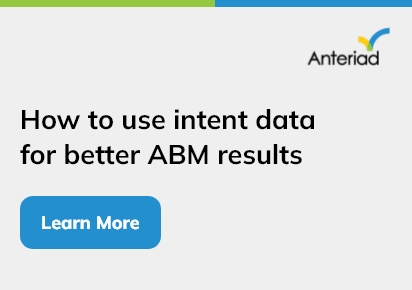1. “It’s Just IT’s Job”
Many utility leaders think of business data analytics as a technical project: leave it to IT, let them build dashboards, and magic insights will appear. But that belief is a mirror of Myth #1 identified by McKinsey & Company in their utilities-data piece.
Here’s the truth: analytics doesn’t live in a vacuum. For utilities, where you’re juggling grid reliability, infrastructure, regulatory pressures, customer expectations and more, you need people from operations, business units, regulation, and IT all in the room. If business leaders treat analytics like “some IT project”, then the resulting insights won’t get adopted.
When you’re doing business data analytics, it’s not enough to build the tool; you’re changing mindsets, behaviour, business processes. Don’t leave that to IT alone.
2. “Our Systems Are Ready, So Insights Will Flow”
Another big misconception: “We’ve got all these systems, so business data analytics will take care of itself.” McKinsey again: many utilities assume that stitching together ERP, WAM, CIS, GIS, etc, means “we’re ready”. But they’re not.
Here’s the snag: you may have all the data, but unless you’ve thought through which data in which format, how it comes together, how it’s cleaned, and whether people can access it in usable form, then business data analytics is going to stall.
For instance, legacy systems may speak different data languages. Silos may persist. So, key for utility execs: map your data when doing business data analytics. Know the sources, the flows, the quality, and how you’ll link them.
3. “Build a Data Lake and the Rest Will Sort Itself”
This is the “half-myth” perhaps: many organisations think once you have a huge repository of data (a “data lake”), then you’ll harvest insights. But in utility land, that’s risky. Again, from McKinsey: large unstructured data stores without business context often become expensive tombs of “dark data”.
When pursuing business data analytics, the lake isn’t the endgame. The question should be: What business question are we answering? Which analytics use-cases deliver value now? Pouring everything in without purpose often means you pay the cost (storage, complexity) and get little back.
So, when you plan business data analytics in a utility context, start with the outcome, then build the ecosystem.
4. “Data Quality and Strategy Can Wait till Later”
Another common misstep: under-investing in data governance, data quality, and an analytics strategy. Research across industries shows that businesses diving into data analytics without a clear plan often waste time, resources and lose credibility.
In utilities, data is often generated from hundreds or thousands of sensors, field devices, smart meters, all with different protocols and varying quality. The value of business data analytics here depends on trustworthy data, structured processes and good governance.
If you skip this, your analytics will deliver questionable findings (‘garbage in, garbage out’) and your leadership will lose faith.
5. “Silos Don’t Matter; Each Department Can Do Its Own Analytics”
In the utility world, different business units (generation, distribution, customer service, regulatory, operations) often run their own analytics or data-reporting efforts. But the moment you build silos, your enterprise-wide business data analytics ambitions get fragmented. From the energy/utility analytics view, data silos are a major obstacle.
If department A and B each work on their own niche analytics without a shared data strategy, you lose cross-domain insights. For example, linking customer-usage patterns with grid-asset-condition data may uncover new maintenance priorities. But if those live in separate silos, you’ll never see the bigger picture.
So, utility execs need to push for enterprise-wide alignment of business data analytics efforts, not just department-by-department.
5½. “Analytics ROI Will Come Quickly If We Just Invest”
Here’s the “half” item: there’s a hope or belief that if you spend on analytics tools and hire some data scientists, you’ll see big returns fast. But the reality is mixed. One blog noted that major companies have underinvested in the support structures around analytics, which causes projects to flop.
In utility settings, especially, you’re dealing with complex systems, legacy assets, regulatory constraints, and long-cycle investments. So, business data analytics won’t always give short-term wins unless you design for “quick wins” plus a longer horizon.
Fix: pick one or two high-impact use-cases (say predictive maintenance, or demand forecasting) with clear metrics. Then ramp up. Show value. Expand. Don’t bet the house on “we’ll overhaul everything with analytics in three months”.
Bringing it all together
When utility executives approach business data analytics as a checkbox (“let’s implement analytics”), they often fall into these traps: leaving it to IT, assuming systems alone will deliver, building data lakes before business questions, ignoring data governance, tolerating silos, and expecting immediate ROI.
Instead, a better path looks like this:
• Define: What business outcome are you targeting? (E.g., reduce outage time by 15%, improve customer experience rating, optimise asset lifecycle cost).
• Align: Engage business leadership, operations, IT, and analytics teams together; business data analytics is cross-functional.
• Inventory: Map what data you already have, where it lives, how clean it is, and how accessible it is.
• Build purposefully: Pick the use-cases that matter. Link the systems. Clean the data. Ensure governance.
• Measure: Track metrics from day one, both analytics adoption metrics (who uses insights?) and business metrics (what improved?).
• Scale: Once success is evident, expand to more domains, more advanced analytics (predictive/prescriptive) rather than just descriptive.
• Repeat: Business data analytics is not once-and-done; data evolves, the business grows, and your analytics maturity must evolve.
Also read: How to Boost Your Business with Data Analytics Training



